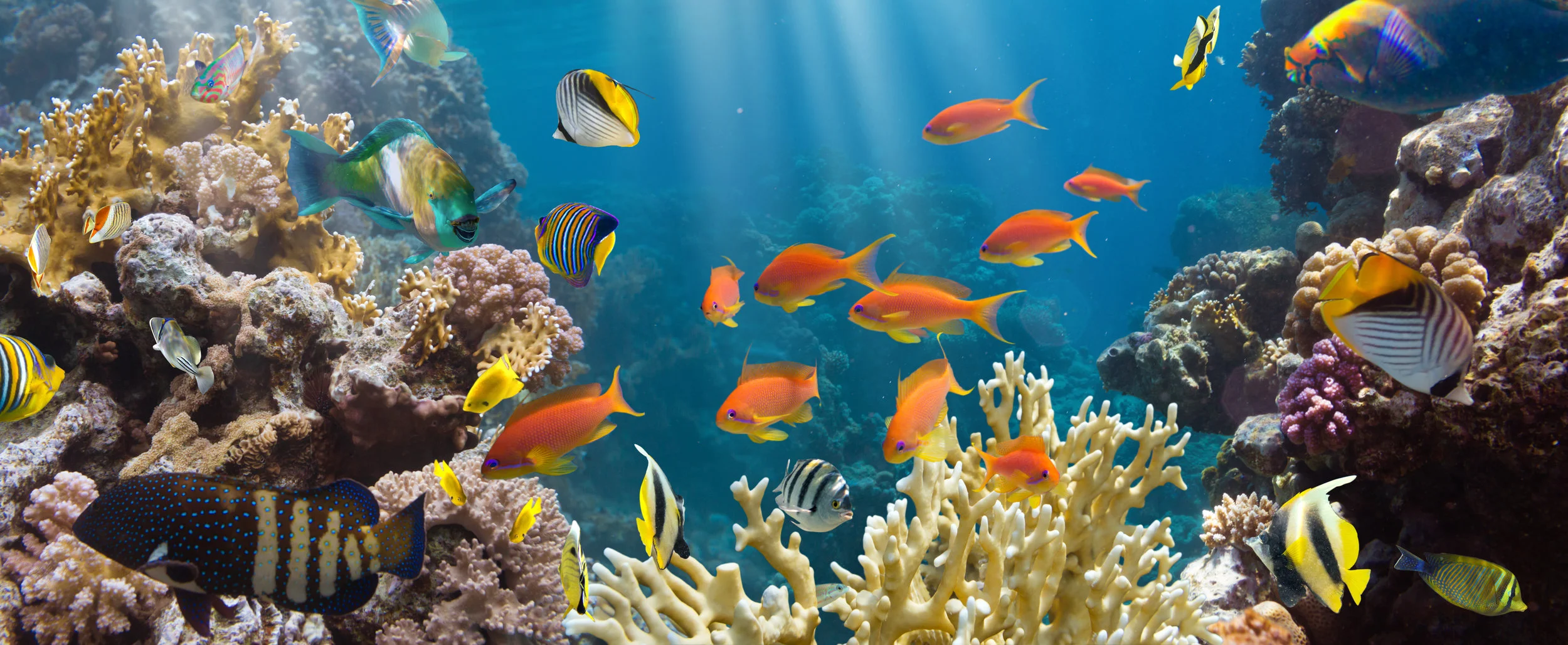Animals & the Environment: Coral Reefs
BY C. WU
Like a human body, a coral reef recovers best from disaster when it has not been previously worn down by stress.
These diverse, important ecosystems—the value of reefs is estimated to be $30 billion USD or even $127 billion USD a year—are victim to direct human activities such as over-fishing and pollution. The warming of the oceans and the atmosphere also threaten the health of coral reefs. Rising levels of carbon dioxide not only increase the temperature; the gas forms carbonic acid with water, increasing ocean acidification and making it harder for corals to build skeletons.
Global warming has contributed to coral bleaching. Corals are stressed when temperature, light, or salt content of the water stray from the optimal amounts. When the symbiotic algae in coral polyps, zooxanthellae, are ejected due to stress, the coral is “bleached,” leaving only a bony white skeleton behind.
Currently, there are efforts to improve the resilience of reefs. A healthy reef is more likely to bounce back after typhoons and hurricanes; they can even resist bleaching. Local regulations, like in Maui where they have designated a protected area where important herbivorous fish can’t be removed, have been shown to increase reef health. These fish eat algae and seaweed, preventing them from out-competing corals. In the Great Barrier Reef, one such fish is the steephead parrotfish, Chlorurus microrhinos. The scraping bites of parrotfish make them especially adept at clearing algae away, clearing substrate for coral to grow on.
Chlorurus microrhinos
Marine protected areas (MPAs) use a variety of restrictions and management methods to protect areas like the Great Barrier Reef and the Northwestern Hawaiian Islands. Large MPAs are maintained by organizations like the National Oceanic and Atmospheric Administration in the United States, while smaller ones are managed locally.
Despite these efforts, more reefs will be lost or damaged in the future. Preserving coral reefs long-term, as with protecting the environment as a whole, calls for a reduction in carbon dioxide in the atmosphere.
References
Parker, Britt. “Reef Resilience.” Audio blog post. Digging Deeper. National Oceanic and Atmospheric Administration, Web. 20 July 2017.
https://oceanservice.noaa.gov/podcast/sep16/dd67-reef-resilience.html
The Ocean Portal Team. “Corals and Coral Reefs.” Ocean Portal. Smithsonian. Web. 20 July 2017.
http://ocean.si.edu/corals-and-coral-reefs
“What is a marine protected area?” National Ocean Service. National Oceanic and Atmospheric Administration. Web. 21 July 2017.
https://oceanservice.noaa.gov/facts/mpa.html
“Relationship between coral and fishes on the Great Barrier Reef.” eAtlas. Australian Institute of Marine Science. Web. 21 July 2017.
http://eatlas.org.au/content/relationship-between-corals-and-fishes-great-barrier-reef


